Advanced Tips for Redeeming Chase Ultimate Rewards

Many or all of the products on this page are from partners who compensate us when you click to or take an action on their website, but this does not influence our evaluations or ratings. Our opinions are our own.
With a robust network of cards and a number of ways to earn and redeem points, the Chase Ultimate Rewards® program is very popular with travelers.
While you can use your points for things such as gift cards, shopping, Amazon and cash back, you’ll almost always get better value when you redeem points for travel.
Here are a few ways to maximize your rewards to create some ultimate travel adventures.
1. Do the math
One thing many travelers like best about Chase Ultimate Rewards® is that they’re easy to redeem in Chase's travel portal. You can search the portal powered by Expedia for flights, hotels and rental cars and choose to pay cash or redeem your points.
If you have the Chase Sapphire Reserve®, you’ll get a guaranteed value of 1.5 cents per point when redeeming for travel in the portal. If you have the Chase Sapphire Preferred® Card or the Ink Business Preferred® Credit Card, points are worth 1.25 cents each when you book travel in the portal with points.
The other option to use your Chase Ultimate Rewards® points for travel is to transfer them to a variety of airline and hotel partners. Chase partners with several large programs, including Hyatt, Marriott, Southwest and United, and all points transfer at a 1:1 ratio.
Sometimes, you’ll get the best value to redeem your Chase Ultimate Rewards® when you transfer them to partners. Other times, it will cost fewer points if you book directly in the portal.
Check out this economy flight from Washington, D.C., to Mumbai, India. If you transferred Chase Ultimate Rewards® and booked through United, this flight would cost 85,000 miles round-trip, plus $50.07 in taxes and fees:
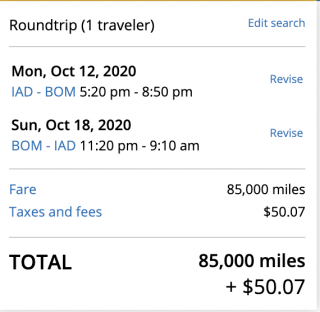
If you have the Chase Sapphire Reserve® and book this United flight directly in Chase's travel portal, without transferring points to United, you would pay just 42,825 Chase Ultimate Rewards® for the exact same flights.
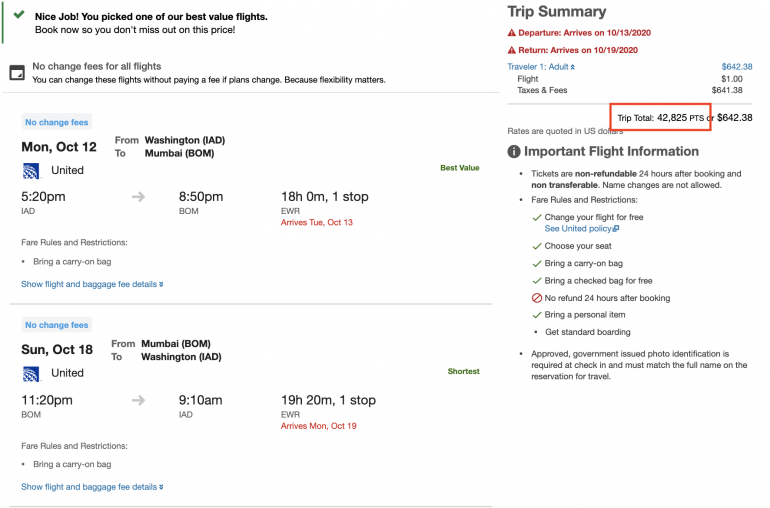
But here’s why it’s important to do the math and check your options: You can’t always assume that you’ll get the best deal for travel by using the portal.
Let’s say you’re flying from New York to Singapore and you want to splurge for a lie-flat business class seat on the long journey. If you search for options to redeem your points in the portal, you’ll find a business class seat on Singapore Airlines going for a hefty 288,546 miles.

Then, you check directly with Singapore Airlines and discover that same business class flight for 198,000 Singapore KrisFlyer miles.
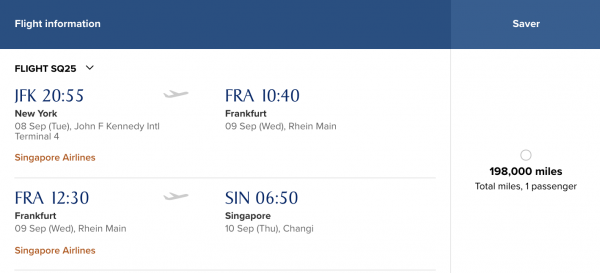
Since Singapore Airlines is a transfer partner, you could transfer 198,000 points and book directly through the airlines, rather than use 288,546 Ultimate Rewards® in the portal. That’s a difference of more than 90,000 points!
Always do the math and check your options. Don’t assume that you’ll get better value if you book directly in Chase's travel portal, or that you’ll always get better value by transferring to partners.
» Learn more: 5 travel rewards myths that could cost you
2. Book flights directly in the portal and earn miles
As you saw in the first example above, you could fly to India for 85,000 United miles, or you could save about half of that and book directly through Chase for 42,825 points. There’s another benefit to booking flights through Chase: You’ll earn miles when you fly.
When you redeem transferred miles for a flight, you won’t earn new miles for the award flight you take. But when you book a flight with credit card points like Chase Ultimate Rewards®, it acts like a revenue ticket and you will earn new miles when you fly. When cash fares are low, you can find great deals by booking directly in the portal for a low number of points. Plus, you’ll earn miles in the process.
It’s important to note this doesn’t hold true for hotels. If you book a hotel room through Chase's travel portal, you won’t earn hotel points during your stay.
3. Say aloha to Hawaii for only 17,500 miles
Want to fly a United flight from the U.S. mainland to Hawaii for fewer miles than United charges? With Chase Ultimate Rewards®, you can.
Singapore Airlines is one of the airline partners that you can transfer your Chase Ultimate Rewards® to at a 1:1 ratio. Singapore is a member of the Star Alliance, so you can use Singapore Airlines miles to book flights on any Star Alliance partner.
When you use Singapore KrisFlyer miles to fly from the continental U.S. to Hawaii, you’ll pay just 17,500 each way in economy. Since United is also part of the Star Alliance, you can use your Singapore Airlines miles to fly United to Hawaii, and you’ll likely pay fewer miles than United would charge. United has switched to dynamic award pricing and no longer publishes an award chart, so you can’t be sure how many miles it will charge for a flight to Hawaii.
But when United did publish a chart, it cost 22,500 miles for a one-way flight to Hawaii. If you transfer Chase Ultimate Rewards® to Singapore Airlines instead of United, you’ll most likely get a better deal on a flight to Hawaii. You can search United’s website for your travel dates to compare and ensure you get the best deal.
4. Book hotel rooms for the whole family, with points
If you’ve ever traveled internationally with more than two people, you know that hotels can have strict occupancy rules. If you have kids or extra friends or family members in tow, you’ll have to book two standard rooms at a lot of hotels. Even rooms with two twin beds may restrict occupancy to three people (including children).
In this search for a room on the Hyatt website for two adults and two children (four occupants) at the Hyatt Regency Kyoto, a message pops up that the hotel is not accepting points reservations.
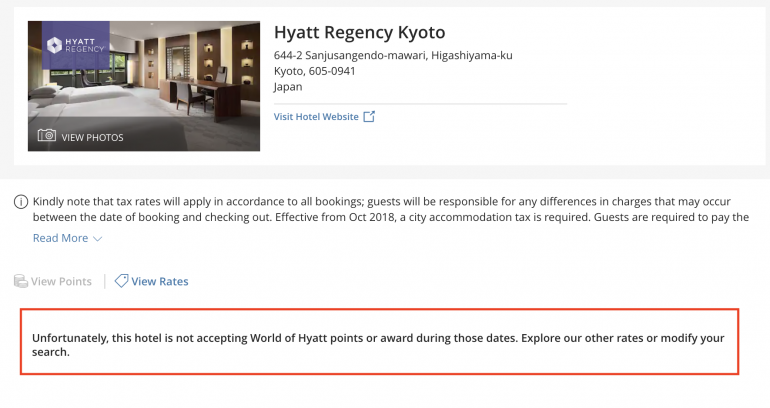
However, you could book a points reservation if there are one or two guests.
But an interesting thing happens sometimes when a Chase Sapphire Reserve® cardholder does a search for the same hotel, on the same dates for four occupants in Chase's travel portal:
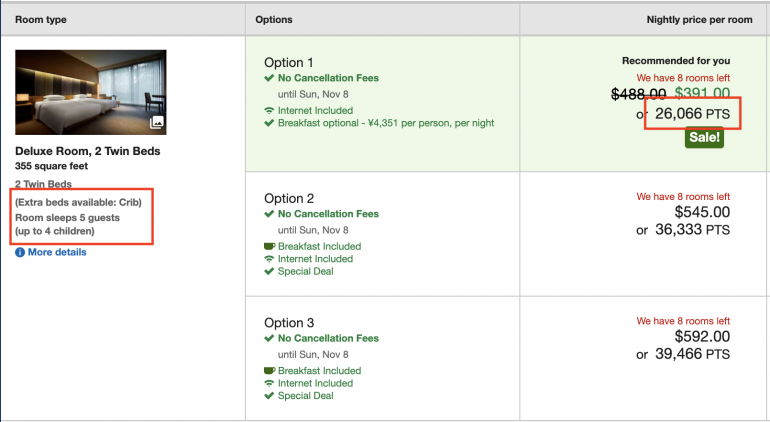
Not only are you able to make a reservation, but at a reasonable rate (26,066 points). If a family of four needed to get two rooms at the Hyatt Regency Kyoto because of occupancy limitations, it would cost 50,000 Hyatt points per night. By redeeming Chase Ultimate Rewards® points through Chase's travel portal, you’re getting a room that explicitly allows two adults and two children even when the hotel won’t accept award reservations directly for a family of four.
5. Combine your points
Most people who carry a Chase Ultimate Rewards®-earning card have heard about the 1:1 transfer ratio to a variety of airline and hotel partners. But there’s a lesser-known transfer option that can be incredibly helpful as well.
If, for example, you have a Chase Sapphire Reserve® and a Chase Freedom Flex®, you’ll earn Ultimate Rewards® in two separate accounts. You can easily combine those into one account to make redemptions simpler while getting more value out of your points. Just transfer them to your Chase Sapphire Reserve® account (where you can redeem for 1.5 cents per point), instead of leaving them separate in the accrual account of your no-fee Chase Freedom Flex® (where you can only redeem for 1 cent per point in value).
Not only can you combine the points that you earn between cards, but you can also combine points with one member of your household. This can be very useful when you don’t have enough points in either account to reach the award you want.
Just log into your Chase Ultimate Rewards® account, go to the top left of the screen and click on the three horizontal bars icon. You’ll come to a long menu of options — scroll to the bottom, then you’ll find the option to "Combine Points."
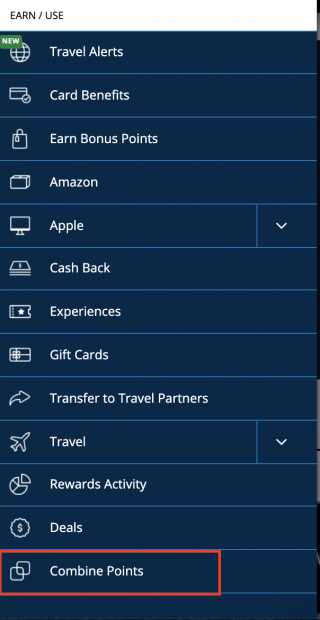
You can combine points with one member of your household who also has a Chase Ultimate Rewards® account. The person doesn't have to be your spouse or child, but they must legally reside in the same household (Chase makes it clear that if you attempt to misuse this benefit, your points and account will be revoked).
So if you’re 10,000 points shy of the award you’re eyeing and your household member has 10,000 points to spare, they can transfer these to you with a few easy clicks.
If your household member is added as an authorized user of your card, you can also transfer your Chase Ultimate Rewards® points into your authorized user’s partner hotel or airline account.
The bottom line
If you take the time to crunch the numbers, you’ll sometimes be able to save thousands of points if you book directly through Chase's portal rather than transfer your points for the trip you have in mind. Or, if you can find the sweet spots when you’re planning a trip, you can get outsized value for your Chase Ultimate Rewards® points when you transfer to an airline or hotel partner.
Also, there could be an opportunity to combine forces with someone else in your household with a Chase Ultimate Rewards®-earning card to supercharge your collective points balance.
The information related to the Ink Business Preferred® Credit Card and Chase Freedom® has been collected by NerdWallet and has not been reviewed or provided by the issuer of this card.
How to maximize your rewards
You want a travel credit card that prioritizes what’s important to you. Here are some of the best travel credit cards of 2025:
Flexibility, point transfers and a large bonus: Chase Sapphire Preferred® Card
No annual fee: Wells Fargo Autograph® Card
Flat-rate travel rewards: Capital One Venture Rewards Credit Card
Bonus travel rewards and high-end perks: Chase Sapphire Reserve®
Luxury perks: The Platinum Card® from American Express
Business travelers: Ink Business Preferred® Credit Card
Chase Sapphire Preferred® Card
Travel
Dining
🔥 Huge highest-ever bonus on NerdWallet's 2025 Best All-Purpose Travel Rewards Card is back. Don't miss your rare chance to: Earn 100,000 points when you spend $5,000 on purchases in the first three months. That's worth at least $1,250 toward travel booked through Chase.


